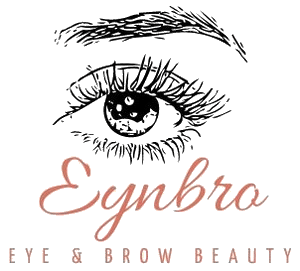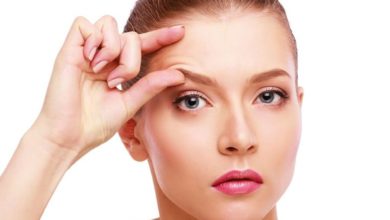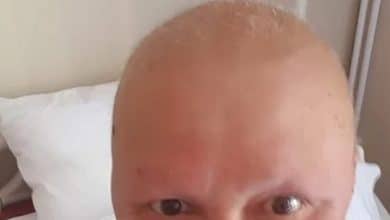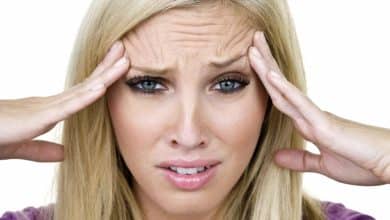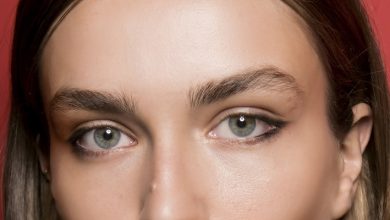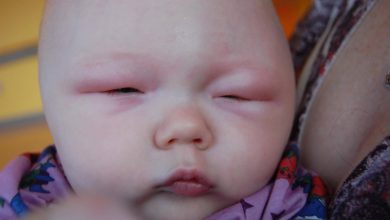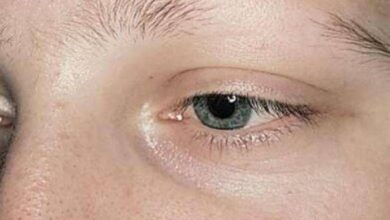How to reduce swelling by eyebrow?
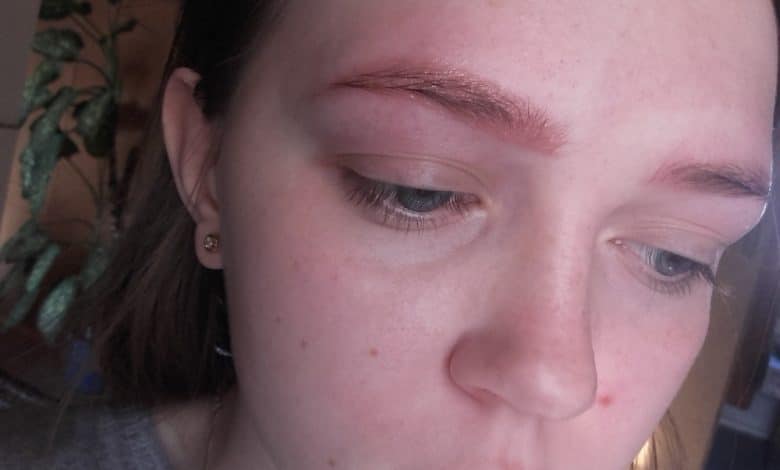
Swelling around the eyebrows can be a common concern, whether it’s due to an injury, allergic reaction, or other factors. Not only can eyebrow swelling be uncomfortable, but it can also affect your appearance and confidence. Fortunately, there are various professional treatments and prevention tips available to help reduce eyebrow swelling and promote faster healing. In this comprehensive guide, we will explore the causes of eyebrow swelling, the impact on appearance, common remedies, home remedies, medical treatments, and lifestyle changes that can aid in reducing swelling. So, let’s dive in and discover effective ways to alleviate eyebrow swelling and restore a natural, balanced look to your eyebrows.
Swollen Eyebrow: What It Means and Why It Happens
Swelling in the eyebrow area often stems from inflammation or fluid buildup in the soft tissue. This reaction can be caused by external irritants, allergens, infections, or underlying medical conditions.
Common triggers include:
- Allergens like pollen or pet dander
- Irritants from cosmetics or skincare
- Infections such as sinusitis or orbital cellulitis
- Autoimmune diseases like lupus or thyroid disorders
- Injury or trauma to the eyebrow or forehead area
Regardless of the cause, eyebrow swelling usually appears alongside redness, warmth, tenderness, or itching—especially if it’s linked to an allergy or infection.
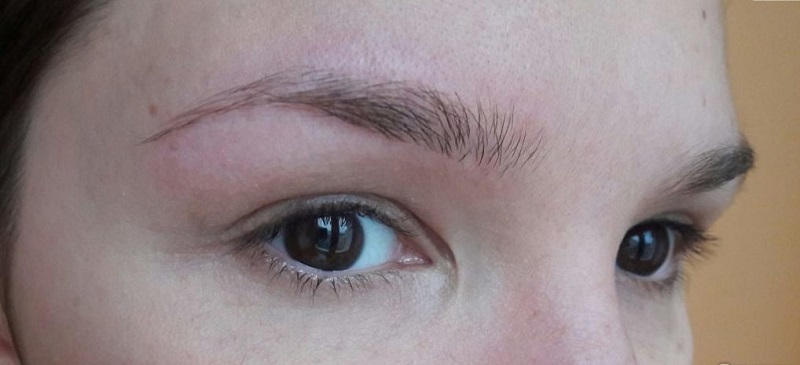
Types of Allergic Reactions Causing Swollen Eyebrows
Allergic reactions are among the most common causes of eyebrow swelling. Here are some typical allergens and how they may affect you:
Symptoms That May Accompany Swollen Eyebrows
Eyebrow swelling is rarely isolated. It often presents with other local or systemic symptoms:
- Redness around the eyebrow area
- Itching or burning sensation
- Sensitivity to touch
- Pain, especially when moving the face or eyes
- Warmth in the affected area
- Discharge or pus if an infection is present
- Blurred vision or bulging eyes (in severe cases)
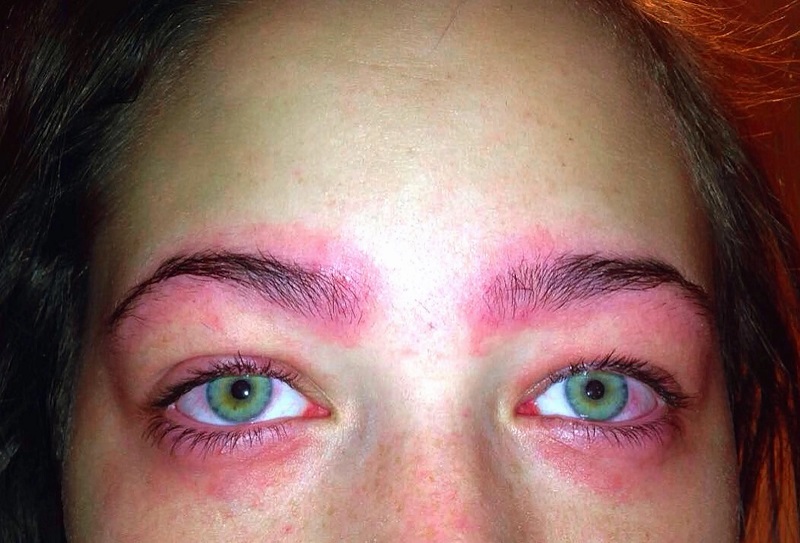
Swollen Eyebrows and Serious Medical Conditions
In some cases, a swollen eyebrow may indicate a more dangerous health issue. Below are conditions that may present with eyebrow swelling as a symptom:
| Condition | Key Symptoms | Medical Urgency |
|---|---|---|
| Orbital cellulitis | Painful swelling, fever, decreased vision, bulging eyes | Emergency |
| Giant cell arteritis | Headache, scalp tenderness, jaw pain, vision loss | Urgent |
| Glaucoma | Severe eye pressure, pain, vision changes | Emergency |
| Trigeminal neuralgia | Sharp facial pain, often one-sided | Specialist |
| Sinusitis | Facial pressure, nasal congestion, swelling | Moderate |
| Shingles (HZO) | Rash, blisters near the eye, burning pain | Urgent |
| Blepharitis | Red, greasy, crusty eyelids | Manageable |
These conditions may develop quickly and carry risks of vision loss, nerve damage, or systemic infection. Don’t ignore swelling if it appears with any of the above symptoms.
How to Reduce Swelling By Eyebrow: Effective Tips and Remedies
Swelling around the eyebrows can be a common and uncomfortable issue. Whether it’s due to an injury, an allergic reaction, or other factors, reducing eyebrow swelling is a priority for many individuals. In this article, we will explore various tips and remedies to help alleviate eyebrow swelling and promote faster healing.
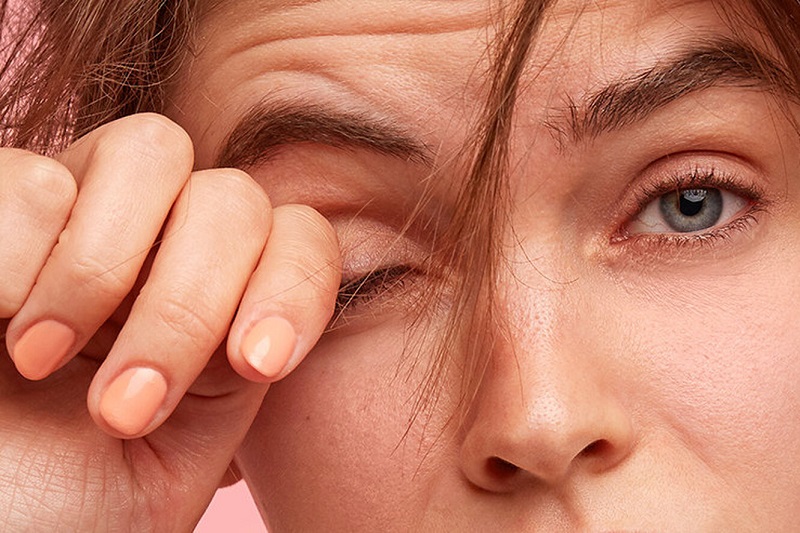
Understanding Eyebrow Swelling
Eyebrow swelling occurs when there is an accumulation of fluid or inflammation in the tissues surrounding the eyebrows. It can result from various causes, including:
- Injury or Trauma: Any form of trauma, such as accidental bumps, cuts, or falls, can lead to swelling around the eyebrows.
- Allergic Reactions: Some individuals may experience swelling due to allergic reactions to cosmetics, hair removal products, or eyebrow treatments.
- Infections: Eyebrow infections, such as folliculitis or cellulitis, can cause localized swelling and redness.
- Eyebrow Threading or Waxing: Improper eyebrow threading or waxing techniques may irritate the skin, leading to swelling and redness.
- Eyebrow Piercings: Swelling is a common occurrence after getting an eyebrow piercing. It typically subsides within a few days with proper care.
- Medical Conditions: Certain medical conditions like sinusitis, blepharitis, or autoimmune disorders can contribute to eyebrow swelling.
Home Remedies for Swollen Eyebrows
For mild swelling caused by allergies or irritation, the following natural remedies may help:
- Cold Compress: Wrap ice cubes in a soft cloth and apply to the area for 10–15 minutes to reduce inflammation.
- Aloe Vera Gel: Its anti-inflammatory properties can soothe the skin when gently applied.
- Cucumber Slices: Place chilled slices over the eyes to decrease puffiness.
- Stay Hydrated: Drinking water helps flush out allergens and reduce swelling.
- Antihistamines: Over-the-counter meds like Claritin or Benadryl can manage allergic swelling effectively.
Professional Treatments and Prevention Tips
If the swelling persists or is accompanied by severe pain, pus formation, or other concerning symptoms, it is advisable to consult a healthcare professional for a proper diagnosis and treatment. They may recommend the following:
- Prescription Medications: In some cases, prescription-strength topical or oral medications may be necessary to alleviate swelling caused by infections, autoimmune disorders, or other underlying medical conditions.
- Hot Compress: For certain types of swelling, such as styes or mild infections, a warm compress can be applied to the eyebrows to promote drainage and faster healing.
- Proper Hygiene: Maintaining good eyebrow hygiene is crucial to prevent infections and minimize swelling. Avoid touching or rubbing the eyebrows excessively and keep the area clean.
- Gentle Hair Removal Techniques: When it comes to hair removal around the eyebrows, opt for gentle techniques that minimize irritation and inflammation. Consider threading or waxing by a professional who is experienced in eyebrow grooming. Avoid aggressive plucking or using dull tweezers, as this can cause trauma to the hair follicles and lead to swelling and ingrown hairs.
- Avoid Allergens: If the swelling is caused by an allergic reaction, it is important to identify and avoid the triggering allergen. This may involve discontinuing the use of certain cosmetic products, hair dyes, or eyebrow treatments that are causing the allergic reaction. If you are unsure of the specific allergen, consider consulting a dermatologist for allergy testing to pinpoint the cause and receive guidance on suitable alternatives.
- Healthy Lifestyle: Maintaining a healthy lifestyle can contribute to overall skin health and reduce the risk of eyebrow swelling. Ensure you have a balanced diet rich in vitamins and minerals, stay hydrated by drinking an adequate amount of water daily, and get enough sleep to support the body’s natural healing processes.
Remember, while these tips and remedies can help reduce eyebrow swelling, it is essential to consult with a healthcare professional if the swelling persists or worsens over time. They will be able to provide a proper diagnosis and recommend appropriate treatments based on the underlying cause of the swelling.
Curex and Allergy Immunotherapy: Long-Term Relief
If you frequently experience eyebrow swelling due to allergies, short-term solutions may not be enough. Curex offers at-home allergy immunotherapy, designed to build long-term tolerance by introducing micro-doses of allergens.
Curex Offers:
- Personalized allergy test kits delivered to your door
- Treatment drops taken under the tongue—no needles required
- At-home convenience, skipping doctor visits
- Long-term prevention of symptoms like swelling, sneezing, and shortness of breath
Many Curex users report dramatic improvements:
“I can finally cuddle with my cats.” – Allie, Nevada
“Less sneezing and shortness of breath.” – Erika, New York
“I can breathe through my nose for the first time in 20 years.” – Zachary, Texas
For individuals with unavoidable allergen exposure, immunotherapy could be a game-changer.
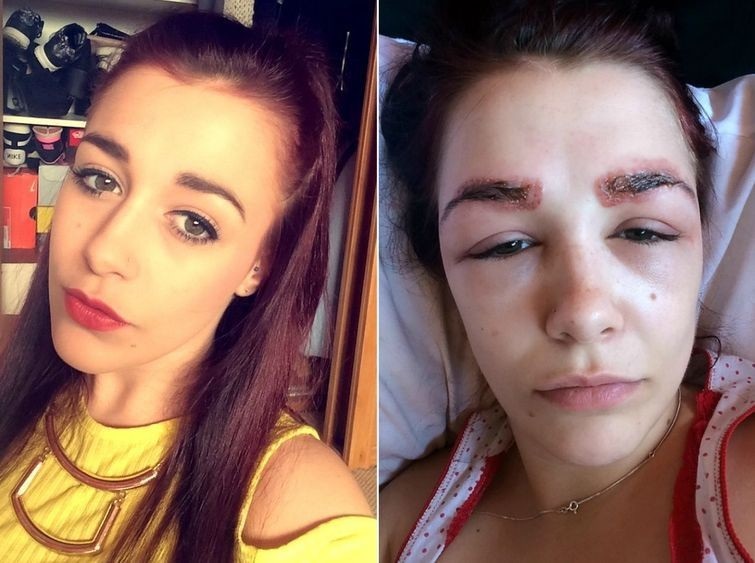
When to See a Doctor
You should consult a healthcare provider if your eyebrow swelling is accompanied by:
- Vision changes (blurring, double vision, or loss)
- Swelling spreading across the face or into the neck
- Difficulty breathing or swallowing
- Severe pain or headache
- High fever (above 38.8°C or 102°F)
- Dizziness or fainting
- Blue discoloration of the lips or skin
These symptoms may indicate a medical emergency like orbital cellulitis or angioedema, which require urgent treatment.
Related Symptoms to Monitor
Because eyebrow swelling may not occur alone, be aware of these associated signs:
- Excessive tearing or dry eyes
- Crusting at the lash line (often seen in blepharitis)
- Red or shiny eyelids
- Drooping eyelid or small pupil (seen in cluster headaches)
- Tingling or numbness (common with shingles)
- Nasal congestion or facial pressure (associated with sinusitis)
These details help narrow down the cause and determine the appropriate treatment.
Diet and Lifestyle Adjustments for Prevention
To reduce the frequency and intensity of swollen eyebrows:
- Anti-inflammatory diet: Eat foods high in omega-3s (salmon, flaxseed) and antioxidants (berries, leafy greens).
- Avoid known allergens: Minimize contact with pets, pollen, or specific foods if you’re sensitive.
- Use fragrance-free skincare: Choose hypoallergenic cosmetics and soaps.
- Regular cleaning: Wash bedding frequently, use HEPA filters, and vacuum regularly.
- Remove makeup thoroughly: Especially around the eyes, to avoid irritation or infection.
TAKEAWAY
Swollen eyebrows can result from minor allergies or signal deeper health problems. Understanding the cause is the first step to effective treatment. While cold compresses and antihistamines can help in the short term, persistent or severe cases deserve medical evaluation.
Allergy immunotherapy through solutions like Curex offers an effective, personalized path toward lasting relief. Whether you’re reacting to pollen, dust, pets, or food, identifying your triggers and committing to long-term care can drastically reduce the chances of waking up with swollen, painful eyebrows.
Frequently Asked Questions
Can eyebrow swelling be caused by cosmetics?
Yes. Fragrances, preservatives, and other ingredients in skincare or makeup can cause contact dermatitis, leading to swelling.
Is it safe to treat swollen eyebrows at home?
For mild symptoms linked to allergies or irritation, yes. Use cold compresses and antihistamines. However, if swelling is accompanied by pain, vision changes, or fever, consult a doctor.
Are swollen eyebrows a common sign of serious illness?
Not always—but in some cases, they can be part of conditions like orbital cellulitis or glaucoma. It’s essential to monitor associated symptoms.
How do I know if it’s an allergy?
If swelling appears suddenly after exposure to pollen, pets, foods, or new skincare products, it’s likely allergic. An allergy test can confirm it.
Can children develop swollen eyebrows from allergies?
Absolutely. Children are especially prone to pollen, pet dander, and food allergies that can cause facial swelling. Curex offers pediatric-friendly testing and treatment.
Conclusion
Dealing with eyebrow swelling can be frustrating, but with the right knowledge and approach, you can effectively reduce the swelling and restore a natural look to your eyebrows. Whether you opt for home remedies or seek professional treatments, it’s important to address the underlying cause and prioritize proper care and prevention. By adopting healthy lifestyle habits, practicing good hygiene, and being mindful of the products and techniques used for eyebrow grooming, you can minimize the risk of swelling and promote faster healing. Remember, if the swelling persists or worsens, it is always recommended to consult with a healthcare professional for proper diagnosis and guidance tailored to your specific situation. Take charge of your eyebrow health and enjoy the confidence that comes with beautifully restored eyebrows.
This guide is not a substitute for professional medical advice. Always consult a licensed healthcare provider if you’re concerned about eyebrow swelling or any related symptoms.
